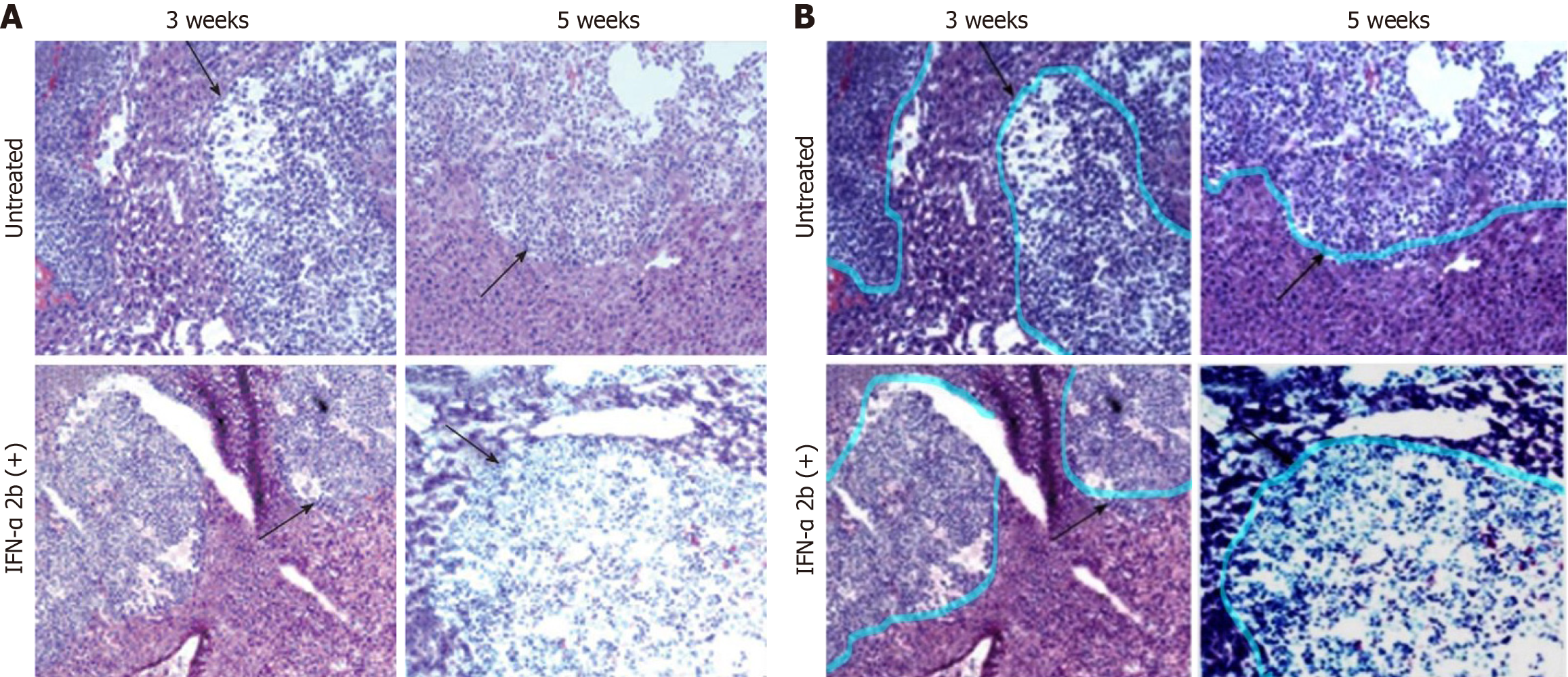Published online Jun 21, 2025. doi: 10.3748/wjg.v31.i23.108472
- This corrects the article "Hepatocellular carcinoma xenograft supports HCV replication: A mouse model for evaluating antivirals".
Revised: May 8, 2025
Accepted: June 4, 2025
Published online: June 21, 2025
Processing time: 66 Days and 15.7 Hours
This is an erratum to the published paper titled “Hepatocellular carcinoma xenograft supports HCV replication: A mouse model for evaluating antivirals”. Figure 9 panels shown weeks 2 and weeks 4 were duplicated. This correction is requested to ensure the accuracy of the information provided in this article.
Core Tip: This correction is to: Hazari S, Hefler HJ, Chandra PK, Poat B, Gunduz F, Ooms T, Wu T, Balart LA, Dash S. Hepatocellular carcinoma xenograft supports HCV replication: a mouse model for evaluating antivirals. World J Gastroenterol 2011; 17 (3): 300-312, PMID: 21253388 DOI: 10.3748/wjg.v17.i3.300. The purpose of figure 9 in this article is to show that interferon treatment does not reduce tumor growth. The histology panel shown in weeks 2 and 4 were duplicated. As the corresponding author, I am submitting a corrected figure. This correction is requested to ensure the accuracy of the information provided in this article. This correction does not impact the conclusion of the manuscript.
- Citation: Dash S. Correction to: Hepatocellular carcinoma xenograft supports HCV replication: A mouse model for evaluating antivirals. World J Gastroenterol 2025; 31(23): 108472
- URL: https://www.wjgnet.com/1007-9327/full/v31/i23/108472.htm
- DOI: https://dx.doi.org/10.3748/wjg.v31.i23.108472
This is a correction to: Hazari S, Hefler HJ, Chandra PK, Poat B, Gunduz F, Ooms T, Wu T, Balart LA, Dash S. Hepatocellular carcinoma xenograft supports HCV replication: A mouse model for evaluating antivirals. World J Gastroenterol 2011; 17(3): 300-312 [PMID: 21253388 DOI: 10.3748/wjg.v17.i3.300].
We thank the reviewer for these constructive comments.
| 1. | Hazari S, Hefler HJ, Chandra PK, Poat B, Gunduz F, Ooms T, Wu T, Balart LA, Dash S. Hepatocellular carcinoma xenograft supports HCV replication: a mouse model for evaluating antivirals. World J Gastroenterol. 2011;17:300-312. [RCA] [PubMed] [DOI] [Full Text] [Full Text (PDF)] [Cited by in CrossRef: 5] [Cited by in RCA: 4] [Article Influence: 0.3] [Reference Citation Analysis (0)] |









